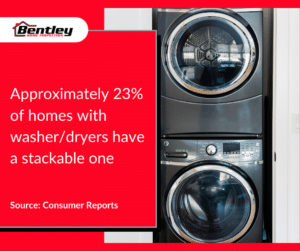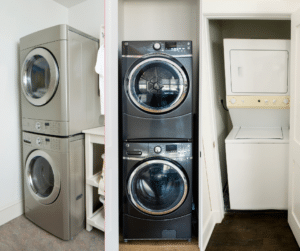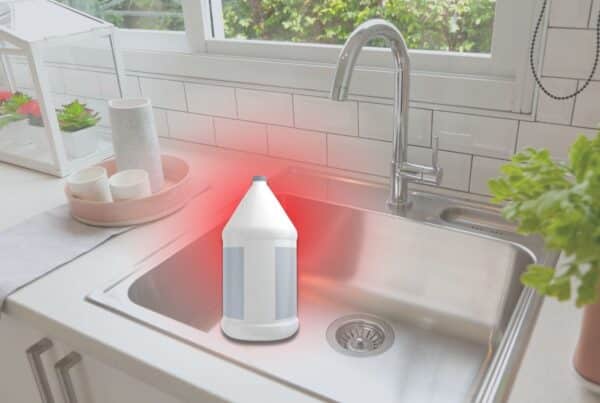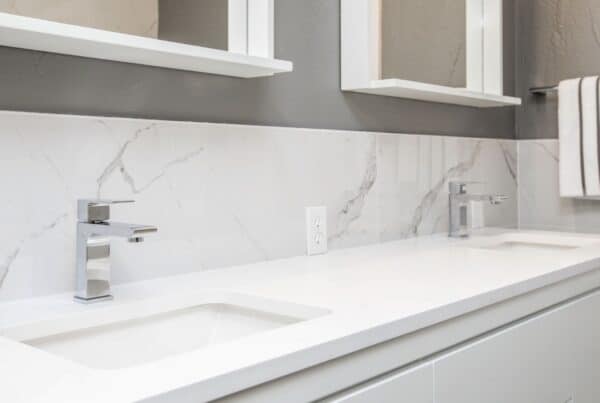
A stackable washer and dryer saves space. It’s a great option for small homes, condos, and apartments. But installation and maintenance matter. If done wrong, problems like leaks, poor ventilation, and damage can happen. Many homeowners assume these units are easy to set up. But they require special electrical, plumbing, and venting. If installed incorrectly, they may not work properly. Issues like mold, overheating, and poor drainage can develop over time.
Pros and Cons of a Stackable Washer and Dryer
- Saves space: These units fit in closets, bathrooms, and small laundry areas. They work well in apartments, condos, and smaller homes.
- Energy-efficient options: Many modern models use less water and electricity. This helps lower utility bills.
- Convenient for small households: If you live alone or with a small family, a stackable unit is usually big enough.
- Easy to hide: Since they fit in compact areas, you can tuck them away behind doors or cabinets.
Cons:
- Smaller capacity: These washers and dryers hold fewer clothes per load. Large families may find them inconvenient.
- Installation challenges: They require specific plumbing, venting, and electrical setups. Homes without the right hookups may need modifications.
- Difficult access: The dryer sits on top, which can make reaching controls or loading clothes tricky.
- Longer drying times: Some stackable dryers don’t dry clothes as fast as full-sized ones.

What to Know if You’re Considering Stackables
Installing a stackable washer and dryer isn’t as simple as stacking one on top of the other. The setup needs to be correct. Otherwise, problems will arise.
- Check the space: Measure the area before buying. Make sure the unit fits and has enough clearance for the door to open fully.
- Ensure proper ventilation: A blocked vent reduces drying efficiency and increases fire risk. The vent must lead outside.
- Verify electrical needs: Some units use a 120V outlet, but others require 240V. Check your home’s wiring before installation.
- Secure plumbing connections: A loose connection can cause leaks. Over time, this leads to mold, water damage, and structural issues.
- Use a stacking kit: A stacking kit keeps the dryer stable. Without it, the dryer may shift, fall, or vibrate too much.

Common Issues Home Inspectors Find
Many stackable washer and dryer units aren’t installed correctly. Here are some common problems I find during home inspections.
- Lint buildup in vents: Poor airflow makes drying take longer. It also creates a fire hazard.
- Hidden leaks: Small leaks go unnoticed in tight spaces. Over time, they cause mold, rot, and water damage.
- Improper venting: If the vent doesn’t lead outside, moisture builds up indoors. This encourages mold growth.
- Unstable stacking: If the unit isn’t secured, the dryer shifts during use. This causes noise, imbalance, and safety hazards.
- Overloading: Smaller drums can’t handle large loads. Too much weight strains the motor and shortens the machine’s lifespan.
Maintenance Tips for Longevity
Proper maintenance extends the life of a stackable washer and dryer. It also helps prevent costly breakdowns. Follow these steps to keep your unit running smoothly.
- Clean the lint trap after every load: Lint buildup reduces airflow. This makes drying slower and raises the risk of fire.
- Check the dryer vent regularly: A clogged vent leads to overheating. Clean it at least once a year.
- Inspect water hoses for leaks: Hoses wear out over time. Replace cracked or bulging hoses to prevent water damage.
- Run a cleaning cycle monthly: Detergent residue and moisture cause mold buildup. Use a washer cleaner or vinegar to keep it fresh.
- Keep the unit level: If the washer isn’t level, it vibrates too much. This causes noise and damages internal parts.
- Don’t overload the machine: Small loads clean and dry better. Overloading reduces efficiency and causes excess wear.
Is a Stackable Washer and Dryer Right for You?
A stackable washer and dryer is great for small homes. But it’s not for everyone. Consider your laundry needs before deciding.
For small households, these units work well. They fit in tight spaces and handle normal loads. But for large families, they may be inconvenient. Frequent washing can become a hassle.
If space is tight but you want something bigger, consider a full-size stacked unit. These provide more capacity while still saving space. Another alternative is an all-in-one washer/dryer combo. These machines wash and dry in one drum, but they take longer and may not dry clothes completely.
Final Thoughts
A stackable washer and dryer is a great space-saving option. But installation and maintenance are key to avoiding issues. Poor ventilation, leaks, and overloading cause problems if ignored. If you’re installing a unit, check electrical, plumbing, and venting needs first. Secure the dryer with a stacking kit to prevent shifting. Keep up with regular maintenance to extend the life of your machine.
If you’re unsure whether your setup is safe, consider a home inspection. A professional can spot potential issues before they become costly repairs. Book an inspection with us today! By taking these steps, you can enjoy the convenience of a stackable washer and dryer without the headaches.



